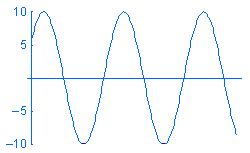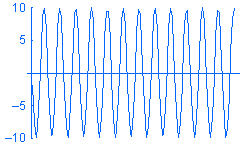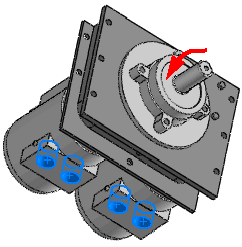Harmonic Analysis
Use harmonic analysis to calculate the peak steady state response due
to harmonic loads or base excitations.
A harmonic
load P is expressed as P = A sin (w
t + f)
where: A is the amplitude, w
is the frequency, t is time, and f
is the phase angle. Sample harmonic loads of different frequencies w versus time
are shown below:


Although you can create a modal time history study and define loads
as functions of time, you may not be interested in the transient variation
of the response with time. In such cases, you save time and resources
by solving for the steady-state peak response at the desired operational
frequency range using harmonic analysis. You can approximate the motor
by a distributed mass.
For example, a motor mounted on a test table transfers harmonic loads
to the support system through the bolts. You can model the supporting
system and define a harmonic study to evaluate the steady-state peak displacements,
stresses, etc. for the motor’s range of operating frequencies. You can
approximate the motor by a distributed
mass.

After running the study, you can view peak stresses, displacements,
accelerations, and velocities as well as phase angles of the response
over the range of operating frequencies.
Click here for more information.
Damping effects
Modal, Rayleigh, and Composite modal
damping options are available for this type of analysis.
Related Topics
Harmonic
Analysis Procedure
When
to Use Dynamic Analysis
Damping
Effects
Loads
and Result Options for Dynamic Analysis
Performing
Linear Dynamic Analysis